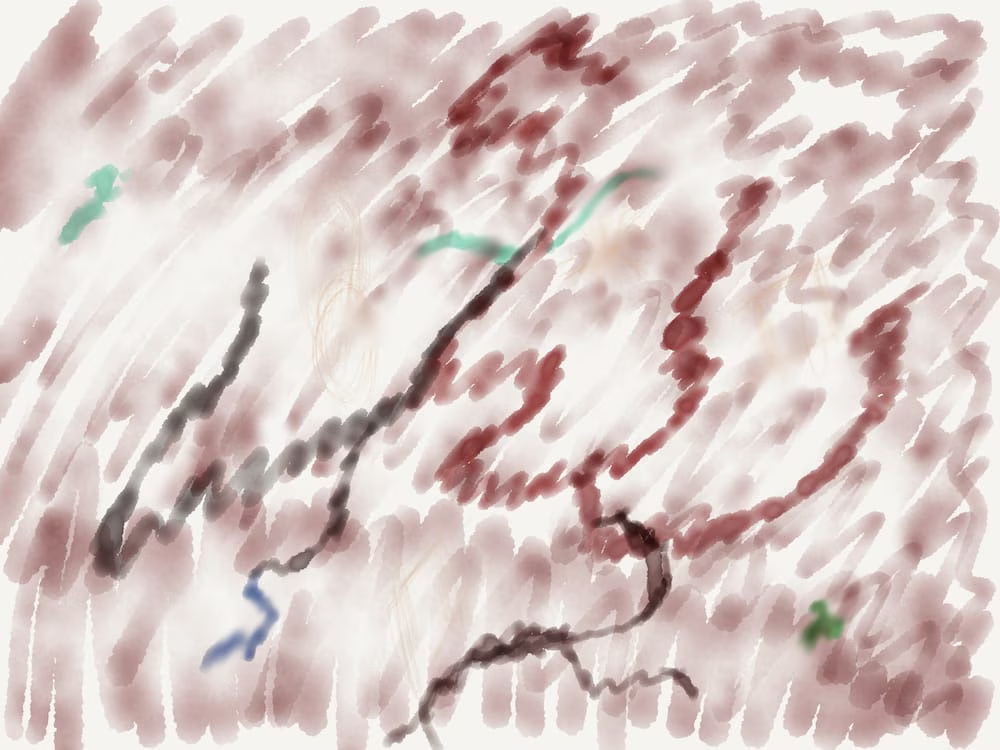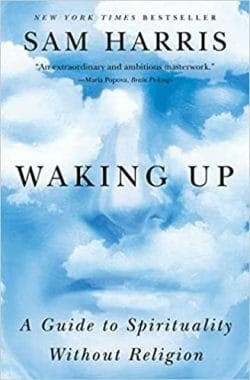Consciousness is a Movie Screen Without an Audience, Theater, or Universe

TL;DR; Meditation is remarkably easy to get into if you remove the hype. This article will show you three basic concepts and a mental model that make both consciousness and meditation more accessible.
I tried and failed to get into meditation for decades. I read all the reading and watched lots of video, with no success. I was close to declaring it wasn’t going to happen for me.
My first success with it came from Sam Harris’ Waking Up > book and mobile app. Sam explains consciousness and mindfulness better than anyone I’ve found, and now I’m happily a novice.
You’re probably saying to yourself:
Ok, fine, but why am I reading an article on consciousness from a novice?
Great question. The answer is that the thing I’m about to teach you is a way of thinking about consciousness and meditation that anyone can learn—even before you start practicing.
It all starts with three basic ideas that build off each other.
There is nothing in your life that you experience outside of the lens of consciousness.
There are two states you can be in when you’re conscious: distracted, and mindful. Most people spend their entire lives in the distracted state.
When you’re distracted, you become the contents of your consciousness. So if someone says something that makes you angry, you become angry. When you’re in a mindful state you can witness the incoming comment, and the thought or feeling of being angry, and the feeling will dissipate under your attention.
Mindfulness is the ability to spend more time in this second state rather than the distracted state, and to be able to switch there whenever you need to during everyday life.
The Movie Screen

But don’t worry if you didn’t get that yet. We’re here to talk about The Movie Screen, which is the best metaphor I’ve found for explaining these concepts in a tangible way.
Imagine a massive IMAX movie screen in a brand new theater. Just a giant flat screen. Seamless and boundless.
Now imagine it floating in empty outer space. There’s no theater. There’s no projector. And there’s not even an audience. You’re not even there. In fact, there’s no universe at all. There’s just The Movie Screen.
That movie screen is your consciousness. Be ready to call this screen to mind as we proceed.
Distraction vs. mindfulness

Ok, call up the screen—a single pane floating in space. All of reality plays on the screen. If you’re experiencing it, it is playing there and can play nowhere else.
Now, close your eyes and take inventory of what you’re experiencing. Notice the sounds, the variations in light behind your closed eyes. And notice the thoughts that come streaming in. Notice the feeling of clothes on your body. Notice the feeling of having limbs. Of feeling warm or cold. Just notice. Notice everything.
That place you just visited was The Movie Screen of your own consciousness. It is the only place where anything can happen in your life.
While you are awake, that screen never stops. The only question is whether you’re paying attention or not. If you aren’t paying attention, things will play on that screen and they will affect your behavior. Someone will be rude to you, or ignore you, or will discount an idea that you wanted to be heard.
Most people spend their lives acting out their inputs in perpetual distraction.
The emotion of anger will play on your screen, and because you didn’t notice it playing, it will become you. You will walk around angry for minutes, or hours, or maybe the entire day. You won’t usually notice, or know exactly why. You’ll just feel like that, and you’ll be a worse friend, a worse co-worker, a worse partner, or a worse parent—all because a thing played on the screen that you didn’t witness and observe.
What this practically means is that you become your inputs. You absorb anger, you become anger. You absorb sadness, you become sadness. This is what happens to people who cannot look at their screen. They are walking string puppets acting out what happened on their screens while they weren’t looking. And most of the world lives every moment of every day like this.
Yuval Harari meditates for 2 hours a day, and he says it’s the only reason he can finish writing reading.
But there’s a simple alternative, which is to switch into the state of mindfulness. Not for a decade on a mountain like a monk, but just for a moment, or a few seconds, or maybe 10 minutes a day.
When understood and practiced this way, mindfulness works instantly. Simply close your eyes and observe what’s playing.
How did that comment make you feel? Did you feel hurt? Angry? Aggressive? Sad? Stare directly into that emotion on your screen and you’ll see something remarkable happen.
It will dissipate almost instantly.
When you observe things playing on your screen—whether they are thoughts or emotions—that you don’t want to affect you, you remove their ability to do so. They become actors on a screen—temporary occurrences that have a beginning and an end.
Keep in mind that the sensation of you being separate is also another actor on the screen.
While you are in that state, the world calms. Things are playing, and you are observing. In fact, you’re just one of the things playing yourself. That’s all there is. Notice it. Notice everything. Observe every itch, every pain, every prompt, every smell, every sound, and every breath.
The real currency isn’t money or time—it’s attention.
Time slows and everything fades. There is only that.
Now, if you’re not trained in this, you’ll inevitably fail at this after a few seconds and you’ll make the mistake of becoming distracted. You’ll let a thought hit you instead of observing it directly.
You will become that thought.
Once you do you’ll become the puppet again. Flying through life feeling whatever, thinking whatever, doing whatever. You might be driving, or working, or talking with someone. But you won’t be yourself; you’ll be the manifestation of whatever’s playing on your screen without you paying attention. You cannot control the next thought that pops into your mind. But you can decide to go into a mindful state so you’re ready for the next one.
That’s all mindfulness is. It’s deciding to be an observer of consciousness instead of a zombie acting it out.
Daily practicality
So that was a lot. And theoretically it should help you in some way. Right? RIGHT?
I have a problem with a lot of advice around soft things like mindfulness and meditation. Too often they give you this productive feeling while you’re learning it, but you’re left with nothing at the end. For me, the real question when you learn anything new is:
How am I going to use this? Like what—at the end of the day—am I doing to do different than before?
It’s the right question, and here’s the answer.
First, don’t feel bad that you’ll still spend most of your day in a state of distraction. That’s true for 99% of people, 99% of the time—and yes—even people who are good at meditating. They won’t tell you this, but most of them still curse in traffic and ruminate about negativity at times.
Paying attention to consciousness frees you from becoming its contents.
The difference between someone who sees consciousness this way—and who is therefore able to pay attention to consciousness—is that it gives you the option to instantly transport to that other state. The state of mindfulness.
Whenever you feel frazzled, pull up your screen and pay attention to everything streaming in.
In fact, don’t even call it meditation. It implies that you need a yoga mat, an expensive coffee, and a bit of elitism.
Forget meditation. Everything we learned, when done in practice, comes down to is this:
Pause
Pull up your Movie Screen
Watch the things playing on it
That’s it. See everything. Smell everything. Feel everything. Notice. Pay attention. Watch. Observe.
There’s a screen that represents your consciousness, and you’re able to achieve extraordinary peace just by paying attention to it.
That’s what mindfulness and meditation is about. You can gain even more wisdom by becoming better at meditating—no question. And I’m just a novice at the actual practice. It’s much harder than it looks to, "just pay attention". But the concept itself—which I explain using the Movie Screen—is the most important part.
The distinction between being distracted and being mindful is what the entire thing rests on.
All the reading, the videos, the seminars, meditation, mindfulness, the thousands of years of practice, and all the new fads that are associated with it. They all come down to being able to move from being distracted to being mindful.
From being a zombie who becomes their inputs, to being a witness of your own consciousness.
And now, using this movie screen metaphor, you should be able to do this whenever you want.
Summary
Everything you experience happens in consciousness.
A good model for consciousness is a giant, flat movie screen suspended in space. Everything that you experience—from sensations to thoughts to emotions—are things playing on that screen.
There are two states of consciousness: 1) being distracted, i.e., ignoring what’s playing on your screen, and 2) being mindful, which is paying attention to everything playing on your screen.
If you’re distracted, you become what happens to you and how those things make you feel. If you are mindful, you can simply observe what happens and avoid becoming your inputs.
When you feel overwhelmed or frazzled, call up your movie screen and observe what’s playing on it.
Notes
My thinking on all of this comes directly from what I’ve learned from Sam over multiple years. It’s his clear thinking style on this topic that’s allowed me to arrive at this particular metaphor.
I strongly recommend that anyone interested in meditation—whether you’ve tried and failed many times before, or you’re starting fresh—try the Waking Up app >. Go through the intro course first. It’s a phenomenal introduction to everything mindfulness and meditation.
There’s no attribution on the art for this post because I created it myself. It’s not great, but it turned out better than I thought it would. I used the Paper app on iPad, for anyone interested. It’s been my favorite digital art app for years.
Keep in mind that while I’m massively shilling for Sam Harris’ *Waking Up* app here, you don’t have to use him or his app to get here. You can get there on your own, with your own reading, or with any of the other great apps out there. I just prefer Sam’s approach to teaching is all. But he’s not a gatekeeper, and neither am I. Feel free to find your own path!
I have a video here > that explains the distinction between distraction and mindfulness in a slightly different way.